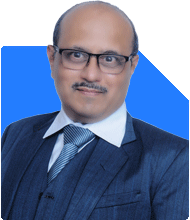Hello, I had taken SBI Life Smart Retirement Plan in the year 2018, the annual payment of which was Rs. 200000 for five years, from 2018 to 2022 I have paid Rs. 1000000 as per SBI Bank rules and as of today the amount of Rs. 1000000 deposited by me has become Rs. 1409000. How much amount can I withdraw after completion of 10 years of this policy? I am not getting any satisfactory answer from the bank, some are saying 33% and some are saying 60%. I also want to know that if I do not withdraw the payment from the policy, then how much pension will I get monthly after completion of 10 years.
Ans: I appreciate your discipline in saving Rs. 2 lakh each year. It is not simple to commit for five years. Many people do not have this consistency. Your accumulated corpus of Rs. 14.09 lakh is commendable. Patience and regular investment are both priceless.
» Withdrawal Possibility After Ten Years
The withdrawable percentage from a retirement insurance policy is not fixed for all. In most cases, policy terms permit a partial withdrawal on maturity—about 33% to 60% of the accumulated corpus. The actual withdrawal ratio depends on your age, current pension rules, plan features, and changes made by the insurer or government authorities.
Most insurance retirement plans allow withdrawal of up to 1/3rd as a lump sum after ten years.
Sometimes, a higher partial withdrawal up to 60% is permitted based on latest regulatory updates.
The withdrawn portion is tax-free. The rest is used for pension generation.
Always check with the insurance company regarding current withdrawal percentages. Rules and benefits may change over time.
Consider your retirement needs carefully before choosing withdrawal vs. pension option.
You may take help of a Certified Financial Planner to optimise withdrawals.
» How Much Monthly Pension Can You Get After Ten Years
The pension generated relies on corpus size, annuity/pension rate, age, and plan features.
If you do not withdraw the corpus, the insurer converts the entire amount into pension.
The monthly pension will depend on plan rates applicable after ten years.
Usually, monthly pension is calculated on prevailing annuity or interest rates at maturity.
The higher the corpus, the higher the monthly payout.
However, pension rates can change due to inflation and policy rules.
Even if insurance plans guarantee returns, rates can be reviewed periodically by the insurer.
A Certified Financial Planner can help estimate future pension based on current rates and updated corpus value.
Plan for longevity and rising expenses so that your pension benefits remain sufficient.
Use conservative assumptions for monthly pension calculation.
» Detailed Insight: Withdrawal and Pension Calculation Factors
Withdrawal percentage (lump sum or commuted value) is mostly capped by IRDA norms.
Pension rates are influenced by interest rates and scheme rules.
The pension amount will be lower if more is withdrawn as lump sum.
Inflation may reduce real value of future pension.
No annuity product is perfect. Assess your risk, age, and goals.
Request a retirement illustration from your insurer yearly before the tenth year.
Balance between immediate lump sum needs and regular income requirements.
Revisit your plan every year till maturity with a Certified Financial Planner.
Ask for a policy schedule to check withdrawal and vesting rule updates.
This helps you remain prepared for retirement.
» Additional Considerations: Policy Changes and Regulatory Updates
Insurers sometimes alter withdrawal clauses based on regulator instructions.
Percentage allowed for withdrawal is not fixed; expect 33% to 60% range.
Changes in maturity rules will affect the timing and amount of your withdrawal.
Stay updated on policy announcements from your insurer.
Keep all policy documents and correspondences safely.
Policy features can differ between traditional and market-linked plans.
Seek updated written communication for clarity.
» Taxation of Retirement Policy Withdrawals
Lump sum withdrawal on maturity is often tax-free.
Monthly pension (annuity) is taxable as per your income slab.
Remember to factor in post-retirement tax obligations.
You may plan tax-efficient withdrawals with a Certified Financial Planner.
Planning helps keep more in hand during retirement.
Retirement plan tax rules can change; stay updated.
» Smart Steps for Retirement Security
Start by estimating your post-retirement monthly expenses.
If you have additional sources of income, calculate total pension needs.
Consider inflation and health costs before deciding withdrawal vs. pension.
Explore rebalancing of retirement corpus based on future goals.
Use insurance policy statements, annual fund reports, and retirement calculators for planning.
Do not rely only on verbal communication from insurer staff.
Written, official information is most reliable.
» Evaluating the Policy Performance
Your current corpus of Rs. 14.09 lakh means you earned returns over time.
The policy’s growth can be checked against other retirement savings options.
Compare projected pension amount with alternate retirement plans.
Try to keep expectations realistic for returns and withdrawal limits.
Past returns do not guarantee future performance.
Your risk profile, age, and retirement date are essential for right decisions.
Update your plan as your circumstances change.
» Options in Case of Policy Surrender
Surrender is possible if policy rules permit.
Surrendering may result in less payout than maturity benefits.
Charges and penalties can reduce the corpus upon surrender.
Consider all pros and cons before surrendering retirement insurance plans.
Switching from insurance policy to investment plans is not always advisable.
Review before making major changes in your retirement strategy.
» How to Optimise Your Retirement Corpus
Balance between lump sum withdrawal and regular pension.
Consider keeping the corpus invested for a few more years for higher growth if allowed.
Diversify your retirement savings using multiple products.
Make family members aware of your policy terms in case of future need.
Maintain regular communication with your insurer for service and records.
Take guidance from a Certified Financial Planner for a 360-degree approach.
» Practical Tips for Your Retirement Journey
Regularly check your policy statement and projected maturity values.
Review retirement needs and pension adequacy every year.
Policy features, withdrawal limits, and pension rates change; stay informed.
Request a retirement benefit illustration annually from your insurer.
Never rely solely on past experience of others.
Your policy’s terms and maturity values can differ from others.
Stay firm in your systematic investment habit for continued financial security.
» Possible Pension Calculation Example (Hypothetical)
Suppose your Rs. 14.09 lakh remains invested till year ten. If policy allows withdrawal of 33%, then Rs. 4.64 lakh may be withdrawn as lump sum. The remaining Rs. 9.45 lakh will generate monthly pension. If future annuity rates are say 6%, estimated monthly pension could be around Rs. 4,725. If higher withdrawal like 60% is permitted, lump sum can be Rs. 8.45 lakh, rest generates lesser pension. These figures will be confirmed after policy anniversary nearer maturity.
» What To Do Next
Check exact withdrawal and pension percentages with insurer before policy matures.
Collect all written policy updates and maturity projections from the insurance provider.
Take support from a Certified Financial Planner for detailed retirement cash flow plans.
Continue developing your retirement savings habit.
Revisit your policy at regular intervals before the tenth year.
» Final Insights
Your consistent investments will always reward your retirement goals. Keep track of your policy terms and maturity options every year. The right decision at maturity will assure lifelong financial comfort. Stay aware, stay invested, and keep nurturing your retirement corpus.
Best Regards,
K. Ramalingam, MBA, CFP,
Chief Financial Planner,
www.holisticinvestment.in
https://www.youtube.com/@HolisticInvestment




























